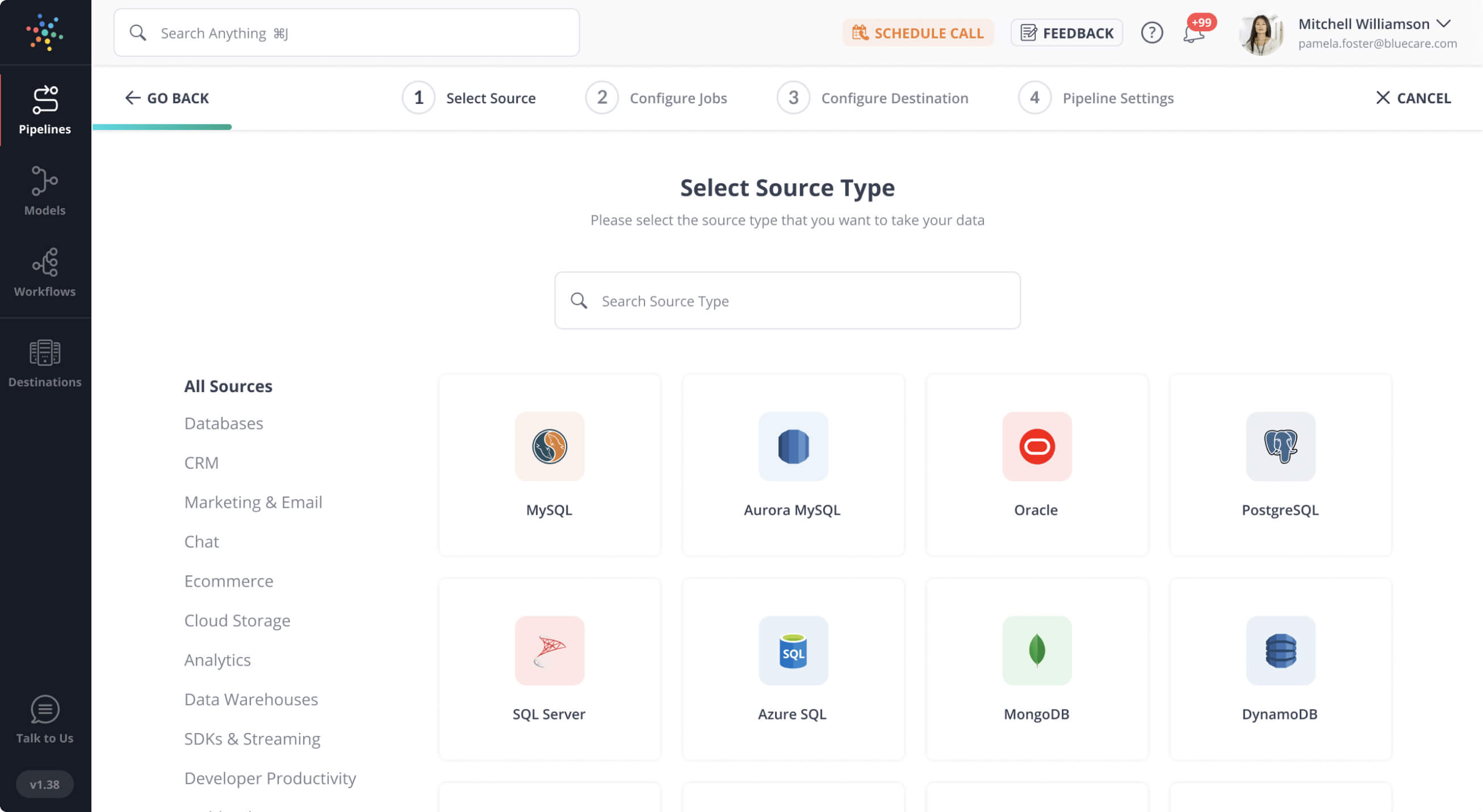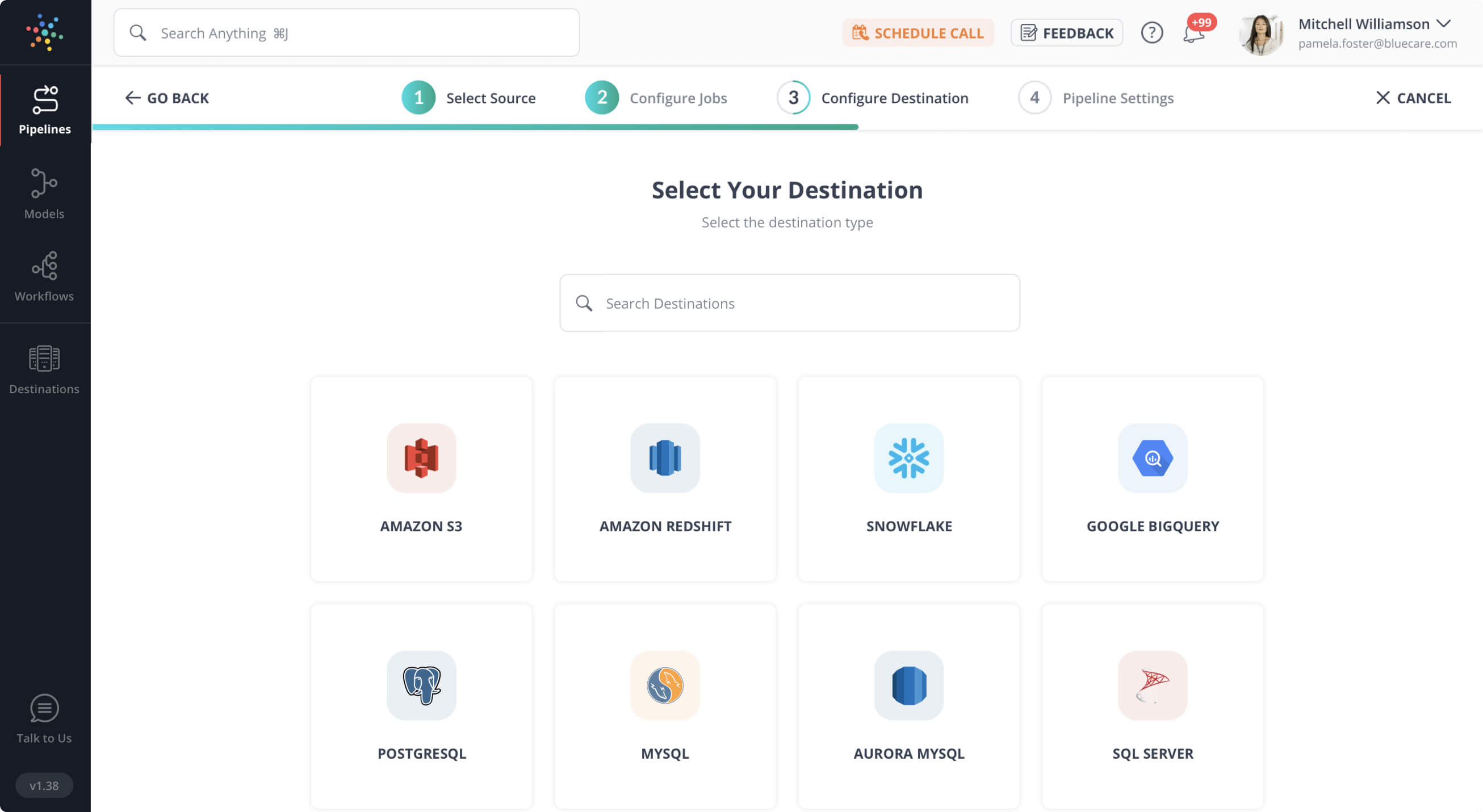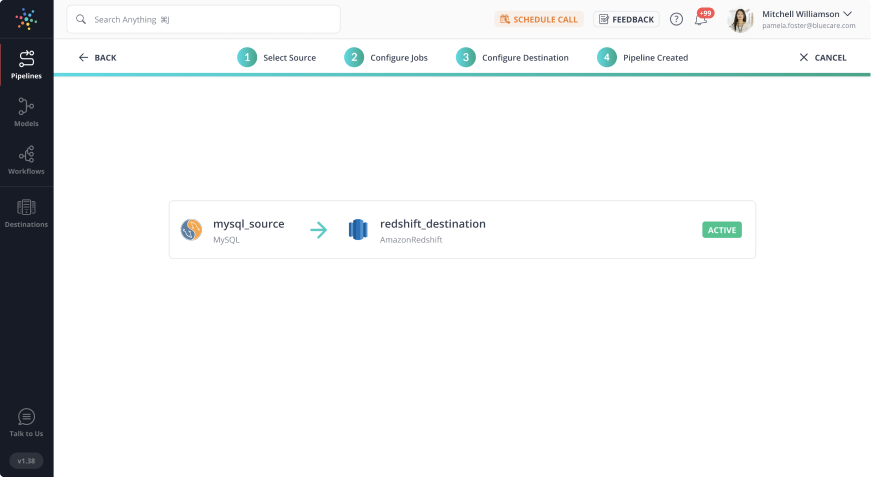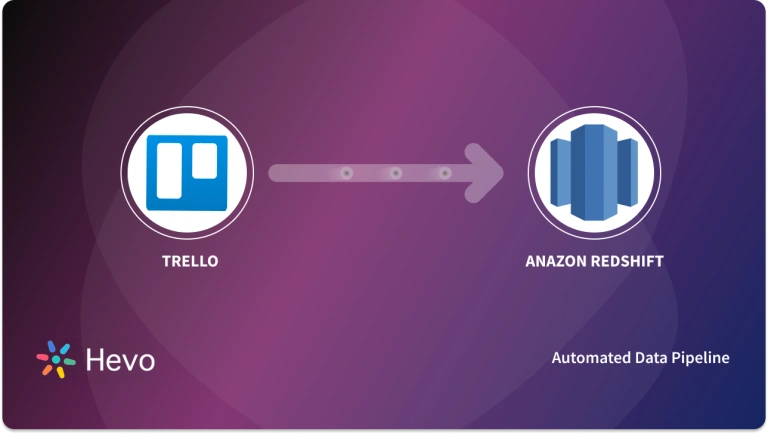Trello is one such application for successful Project Management that will aid collaboration and information management across the organization. It aids in the organization of information and tasks, as well as the ability to examine the timetable and status of each task.
Microsoft Excel, on the other hand, is a Spreadsheet Program. It’s used to create computation grids with text, numbers, and formulae. As Trello contains Project Management details, many times it’s required to transfer Data from Trello to Excel.
In this article, you will get to know about Trello and Excel in brief and learn 3 easy steps for exporting data from Trello to Excel for your business.
Table of Contents
What is Trello?
Trello is a Project Management and Collaboration Tool that helps you manage and organize anything. It’s simple to use, adaptable, and aesthetically intuitive. It’s like having a virtual whiteboard full of sticky notes, with notes organized by team and project, and notes sorted by their current position in the work timetable.
What is Microsoft Excel?
Microsoft Excel is a Spreadsheet Program that is used to record data in the form of Tables. The Data can range from routine planning to expenditure Data associated with an organization. It also aids in the analysis of Data and the creation of visuals on top of Spreadsheet Data.
Hevo is a no-code pipeline that enables data migration from Trello to various destinations/data warehouses. It not only facilitates data Integration but also enriches data through a Python-based drag-and-drop interface. Hevo provides effortless data integration with these features:
- 150+ pre-built connectors for seamless integration.
- Pre-load and post-load transformation capabilities to ensure your data is always ready.
- Automatic schema mapping accurately maps data at the destination without manual effort.
- 24/7 support to assist you during data migration.
- Transparent and cost-effective pricing tailored to meet varied data needs.
Try Hevo today to experience seamless data transformation and integration.
Get Started with Hevo for FreeBenefits of Exporting Trello Data to Excel:
- Enhanced Data Analysis: Excel’s advanced functions and formulas allow for in-depth analysis of Trello data.
- Better Reporting: Easily create customized reports with data from multiple Trello boards.
- Visualization Capabilities: Utilize Excel’s charting tools to visually represent project progress.
- Data Flexibility: Sort, filter, and organize Trello data for better decision-making.
- Archiving & Backup: Excel provides a simple way to store and back up Trello data for future reference.
- Offline Access: Access your data anytime without an internet connection, unlike Trello’s cloud-based platform.
Prerequisites
- Working knowledge of Trello.
- A Trello account with admin privileges.
- Working knowledge of Excel and CSV file formats.
What are the steps for Exporting Trello to Excel?
- Step 1: Navigating to the Print and Export Menu
- Step 2: Set up Trello Business Class
- Step 3: Importing Data to Excel
Step 1: Navigating to the Print and Export Menu
The first step involved in Trello to Excel export is navigating to the Export menu. All Board members, including Board observers, have access to Trello’s Export feature at the moment. It’s located in the Board Menu > More > Print and Export section. Only admin accounts have access to Trello’s Export capability. You need to have an admin account, if you don’t have one you need to request one from your senior. The export is in the form of JSON format only. To export the Data from Trello to Excel you will need to have access to Trello Business Class.
Step 2: Set up Trello Business Class
You need to make sure the account is set up for Business Class Exports to export data from Trello to Excel. Your manager/Trello admin will grant you permission to access Business Class Exports. Trello Business Class allows you to export all of your Workspace’s boards in CSV and JSON formats. You can also save all of your attachments in their original format as a.zip file. To do so, go to the “Export” tab on your Business Class Workspace page and you will see a menu like this.
Step 3: Importing Data to Excel
Business Class boards feature CSV exports, which can be imported into spreadsheet programs such as Microsoft Excel if you need spreadsheet assistance. Each user in a Business Class Workspace can export to CSV via the board. To complete this process you need to simply click “Create New Export” in the menu in Step 2 and you will see the following dialogue box. Now simply click “Export as CSV”, to export data from Trello to Excel.
Now create a new Excel file and click on Data and then click “From Text/CSV”. You will get all of your Data in the respective Excel file. Finally, the data has been transferred from Trello to Excel.
What are the Drawbacks of Manually Exporting Trello to Excel?
The manual way of exporting data from Trello to Excel described above has several drawbacks as well. The following are some of the most common challenges you could face when exporting data Trello to Excel manually:
- The Data flow is only unidirectional, from Trello to Excel. To keep both tools up to date, two-way sync is required.
- The manual procedure of transferring data from Trello to Excel is time-consuming because records must be updated regularly. This consumes resources and time that could be better spent on more critical business operations.
- There is no room for transformation during Data transport. This can be a significant disadvantage for businesses who want to change their Data before exporting it from Trello to Excel.
Conclusion
In conclusion, exporting data from Trello to Excel can significantly streamline your project management workflow, especially when you need to analyze and present project details. By following the three simple steps outlined—navigating to the export menu, setting up Trello Business Class, and importing the data to Excel—you can effortlessly transfer your Trello data. While the manual process works well, it does come with some limitations, including a lack of two-way sync and the absence of data transformation features.
For businesses seeking a more automated and efficient solution, Hevo provides a seamless data transfer option that allows for easy integration of Trello with various destinations. With Hevo, you can eliminate manual export steps and keep your data up-to-date effortlessly, saving time and resources. Sign up for a 14-day free trial and experience the feature-rich Hevo suite firsthand.
FAQs
1. Can Trello export to Excel?
Trello does not natively support exporting directly to Excel, but you can export to CSV and then open it in Excel.
2. Can Trello sync with Excel?
Trello doesn’t offer native Excel syncing, but third-party tools and integrations like Zapier can automate data synchronization.
3. How do I export from Trello to CSV for free?
Go to the Trello board, click “Show Menu” > “More” > “Print and Export,” and select “Export as CSV.”
Share your comments on Exporting Data from Trello to Excel in the comments section below!











